| |
Cryptocoryne pallidinervia Engler |
Though this plant is not very rare in nature, it is seldom imported from Borneo. It
grows in the peat swamp forests of Sarawak and West Kalimantan under extremely acid
conditions (pH 4 or so). Recent imports are from Anderson (1957), Driessen (1975) and
Kettner (1988).
Click on the picture to get the full image (ca. 50 kB) |
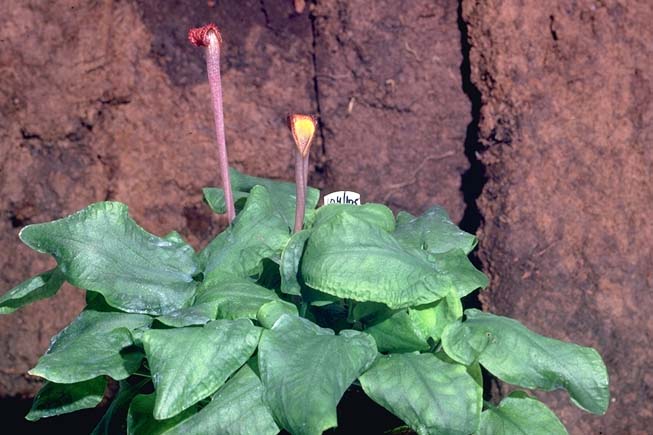 |
Even in a simple mixture of sand and peat litter (with an
artificial fertilizer) it is very easy to grow Cryptocoryne pallidinervia. But
you don't see any pallid nerves, as you might expect.
coll. Driessen, cult. B104 |
|
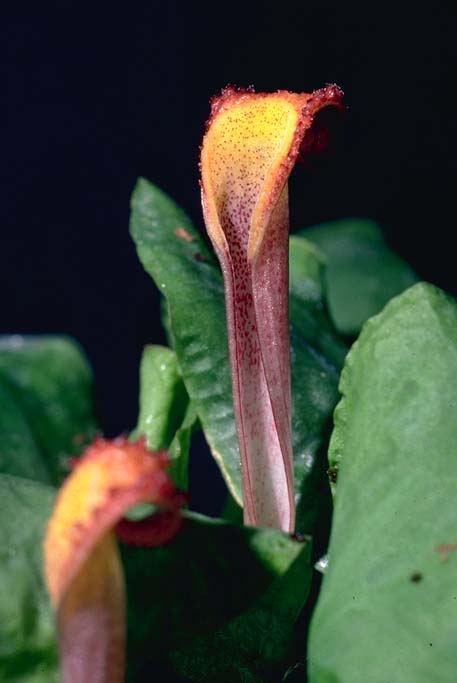 |
Sometimes the spathe-leave is not closed to form a tube. This
rather uncommon but is seen in more species. The red dots reach far into the tube.
coll. Driessen, cult. B104
|
|
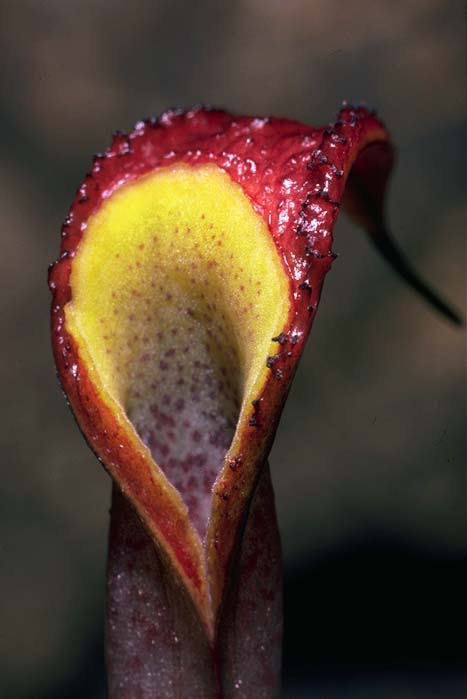 |
In my cultures, the limb of the spathe, when opening,
immediately folds up backwards. The limb is rather warty, the throat is densely spotted
with fine red dots.
coll. Driessen, cult. B104 |
|
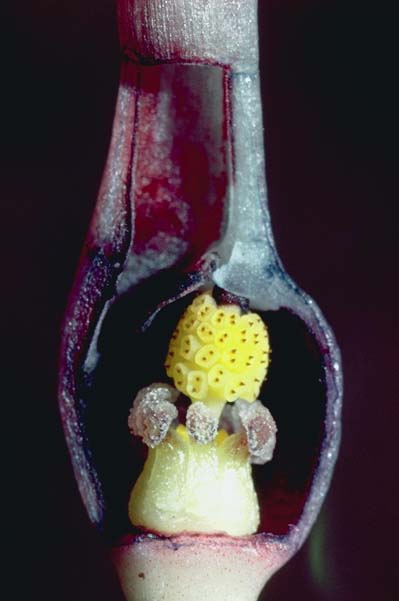 |
The kettle of C. pallidinervia is dark purple
inside. The naked part of the spadix is very short, the male and the female flowers
reaching each other.
coll. Driessen, cult. B104
|
|
| |
|
|
|
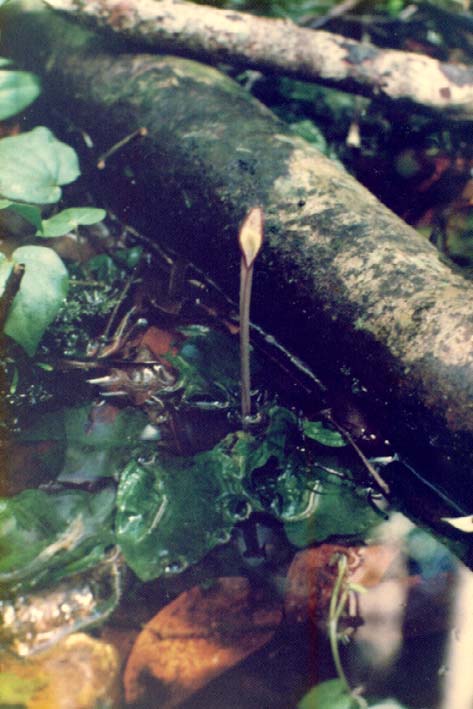 |
A habitat of C. pallidinervia in West Kalimantan.
According to Anderson, the species is wide spread in the peat swamp forests
coll. Driessen
photo Driessen
|
|
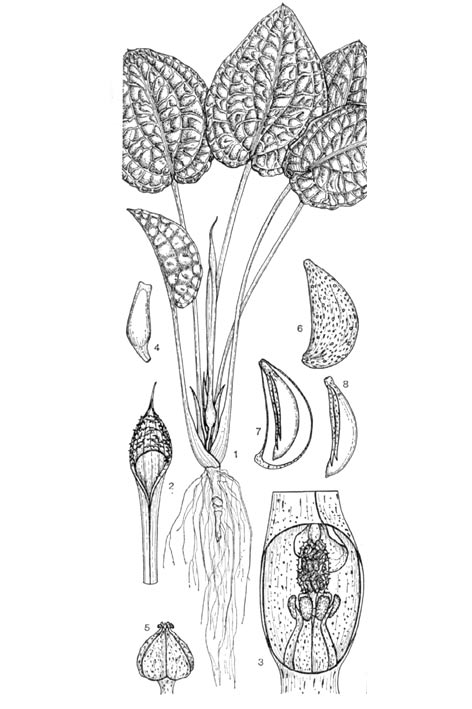 |
A drawing of the type material of Beccari. Note the very
bullated leaves and the upright limb of the spathe.
(De Wit 1983)
drawing Ike Zewald
|
|
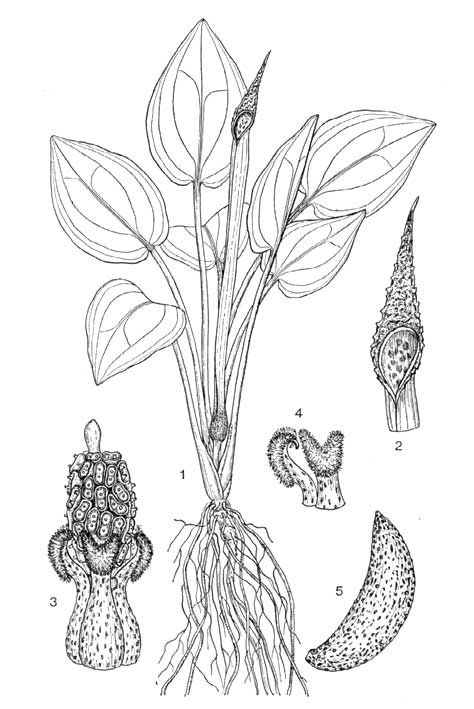 |
In 1970 De Wit described 'C. venemae' from material
collected by Haviland.
(De Wit 1970, 1971)
drawing Ike Zewald
|
|
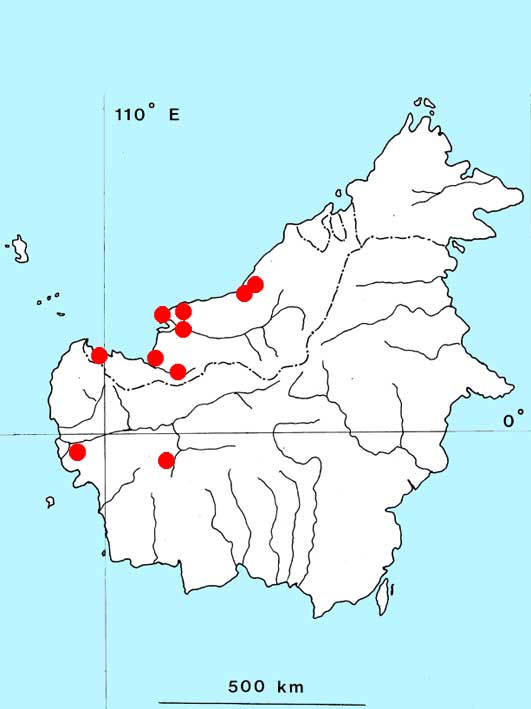 |
Known distribution of C. pallidinervia. Kettner and
Witte found the plant almost along the road near Sibu.
|
|
| |
|
|
|
The very best way to cultivate C. pallidinervia is to use pure beach tree
soil. See for example Jacobsen 1992. The plants develop a very luxurious foliage with the
promised pallid nerves.
Updated January 1998 |
Literature. :
- Anderson, J.A.R., 1963. The Flora of the Peat Swamp Forests of Sarawak and Brunei,
including a catalogue of all recorded species of flowering plants, ferns and fern allies.
Gard. Bull. 20 : 131-228 + map + 10 phot.
- Bastmeijer, J.D. & C.Kettner, 1991. Cryptocoryne pallidinervia Engler. Aqua-Planta
4-91 : 123-128 (+cover).
- Beccari, O., 1882. Aracee della Malesia e della Papuasia raccolte da O.Beccari..Malesia 1 : 296-300, Plate 27-28. (Document service)
- Brown, N.E., 1880. On some new Aroideae. J.Linn.Soc.XVIII : 242-245, plate IV.
- Engler, A., 1879. Cryptocoryne Fischer. Bull.Soc.Tosc.Ortic. 4 : 301-302. (Document service)
- Engler, A., 1920. (Cryptocoryne in:) Das Pflanzenreich IV.23.F. Araceae -
Aroideae : 232-249, Leipzig. (Document service)
- Jacobsen, N., 1982. Cryptocorynen. Alfred Kernen Verlag, Stuttgart.
- Jacobsen, N., 1985. The Cryptocoryne (Araceae) of Borneo. Nord.J.Bot. 5 : 31-50.
- Jacobsen, N., 1992. Die Kultur einiger schwieriger Cryptocoryne-Arten in Buchenlauberde.
Aqua-Planta 1-92 : 18-25.
- Kasselmann, C., 1995. Aquarienpflanzen. Ulmer, Stuttgart.
- Merrill, E.D., 1921. A Bibliographic Enumeration of Bornean Plants. Journal of the Straits
Branch of the Royal Asiatic Society : 106-109.
- Rataj, K., 1975. Revision of the genus Cryptocoryne Fischer. Studie CSAV, c.3.Praha.
- Ridley, H.N., 1905. The Aroids of Borneo. J.Str.Br.Roy.As.Soc. 44 : 169-17.
- Schulze, J., 1971. Cryptocorynen aus Sarawak I-IV. DATZ 24 : 230-233, 267-270, 303-306,
336-339.
- Wit, H.C.D.de, 1970. A key to the species of Cryptocoryne Fish.ex Wydl.(Araceae).
Misc.papers LH Wageningen 6 : 257-280.
- Wit, H.C.D.de, 1971. Aquarienpflanzen. Ulmer, Stutgart.
- Wit, H.C.D.de, 1990,Aquarienpflanzen, 2. Auflage,Ulmer, Stuttgart.
- Witte, K.-E., 1991. Semiaquatic Ecotypes in Peat Swamp Forests: a threatened habitat with
a special aquatic community. 7th International Ichthyology Congress, Den Haag.
- Witte, K.-E. & J.Schmidt, 1992. Betta brownorum, a new species of anabantoids
(Teleostei:Belontiidae) from northwestern Borneo, with a key to the genus. Ichthyol.Explor.Freshwaters, Vol.2,No.4:305-330
|
|
|
|
 |
|
|